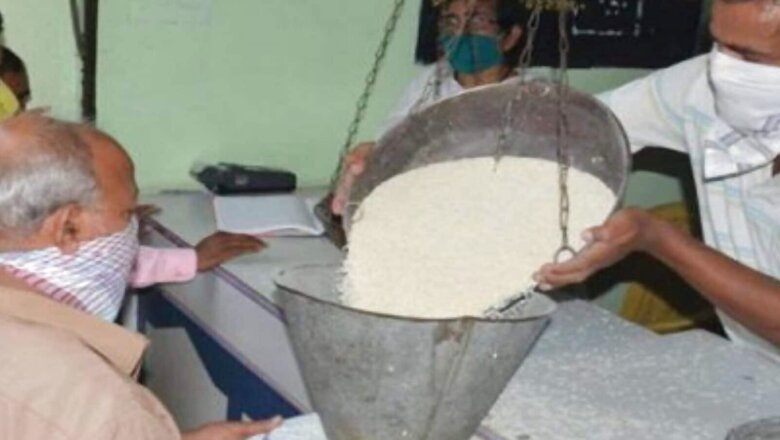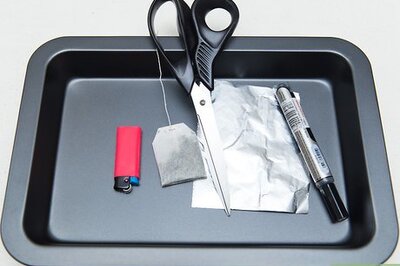
views
A latest report by The United Nations has predicted India will surpass China as the world’s most populous country in 2023. This will result in an alarming situation on various fronts.
One of the biggest challenges could be India’s subsidies system, probably the largest in volume and number of beneficiaries (80 crore) globally. In a tough economic situation, it will be difficult for India to balance growth and sustain such a huge subsidy system. The key for food, farms and various other subsidies meant for the needy is to plug pilferage, which can lead to fiscal savings that can be utilised to strengthen the education, health systems and other basic amenities.
THE RISE
The total quantum of subsidies spent by the Centre and states has rapidly increased from Rs 5.6 lakh crore in FY 19-20 to a steep Rs 8.86 lakh crore in FY 21-22, from a tax kitty of Rs 27.07 lakh crore. The amount spent on subsidies is 33% of the country’s total tax collection and 6% of the GDP, clearly a significant part.
The subsidies have increased from 3% in FY 19-20 to 6% of the GDP in FY 21-22. Per-capita subsidies have grown at 15% CAGR in the same period for over 70% of the population that receives subsidies.
The Centre’s food subsidy has increased more than double in the past three years, from Rs 1.09 lakh crore in FY 19-20 to Rs 2.87 lakh crore in FY 21-22 and fertiliser subsidy from Rs 81,000 crore to 1,40,000 crore in the same period. The Pradhan Mantri Garib Kalyan Yojana’s (PMGKY) subsidy has increased from Rs 6,033 crore in FY 19-20 to Rs 8,456 crore in FY 21-22.
THE PROBLEMS
Reforms in subsidies and encouraging the Direct Beneficiary Transfer (DBT) emerged as a high priority of the government. The DBT continues to provide much-needed relief to the beneficiaries, even as it reduces duplication and fraud. The DBT framework has helped save Rs 2.50 lakh crore since its inception in 2013.
Still, in various cases, the subsidies fail to meet their end purpose due to leakages in the system that have become unwieldy with many intermediary layers leading to significant loss and wastage. The taxpayer-funded subsidy system needs to be made more efficient with artificial intelligence and other technology-driven platforms.
Leakages and corruption reduce the effectiveness of subsidies. According to the parliamentary standing committee on Public Distribution System (PDS), leakages were around 40-50%. Food subsidy can be rationalised through direct cash transfers replacing PDS.
Over six decades, subsidies and even debt waivers have not led 86.2% of small and marginal farmers (cultivating less than two hectares) to sustainable agriculture. Providing subsidies does not ensure it reaches the needy. In fact, the definition of farmer is not clear. If subsidising the cost of input is an ultimate help to farmers, then why are they still under the distress of low income, one of the major causes driving them to suicide.
The tragedy of the farm subsidy is a large part of benefits meant for farmers get diverted for non-farm purposes. For instance in Punjab, free power to farmers’ subsidy bill burden of Rs 7,000 crore a year on the state government exchequer, as there is no metering system on 15 lakh tubewells availing free power. There are no accurate figures to work out the exact consumption for irrigation purpose. Even politicians, government servants and NRIs, with multiple sources of income, are among the beneficiaries of free power; rather, they gain much more than a poor, small farmer.
Free power and subsidised fertilisers lead to overuse. In 131 of the 148 blocks in Punjab, water has been overexploited. A farmer uses 3.5 times more fertilisers and pesticides than in 1970 to get the same output. Although Punjab has only 1.5% of the land area of India, it uses about 23% of the total pesticides used in the country, causing serious environmental issues and health concerns.
SOLUTIONS
Free power and subsidised fertilisers need to be shifted on the metering-monitoring system to avoid depletion of groundwater and overuse of fertilisers. Plugging leakage in the agriculture credit interest subvention scheme is a must as agri-business companies are availing it.
The government needs to undertake a massive exercise to identify the deserving beneficiaries, remove people receiving multiple subsidies and move a majority of the subsidy payments, including for food, to DBT to reduce inefficiencies.
The subsidies monitoring system needs an AI platform that automatically eliminates current beneficiaries who obtain jobs with the government or the private sector providing ESI or EPF benefits.
Reducing the quantum of subsidies by ensuring only the deserving receive them will free up large capital to invest in health, education and betterment of basic amenities.
THE WAY FORWARD
Subsidies should be treated as only temporary measures to help the needy until they can stand. Even as we celebrate the 75th year of independence, ‘Azadi ka Amrit Mahotsav’, there is still inadequate health infrastructure in the country. Every district requires a medical college attached to a multispecialty hospital, and every block needs a primary healthcare centre. The poor, who are out of the ambit of health insurance, need the government’s intermediate free health services.
Education and skill are tools to counter unemployment and poverty. The youth needs to be empowered with quality education and skill centres at schools, so they don’t go on the list of beneficiaries of subsidies like their parents.
Plugging the pilferage of taxpayers’ hard money on subsidies will give a cushion to the government to use the saved money on empowering the needy with high quality of education and health services. It will then be ‘Har Ghar Tiranga’ in the real sense.
The author is vice-chairman, Sonalika Group and former vice-chairman, Punjab Planning Board, Chairman, ASSOCHAM Northern Region Development Council. The views expressed in this article are those of the author and do not represent the stand of this publication.
Read the Latest News and Breaking News here




















Comments
0 comment